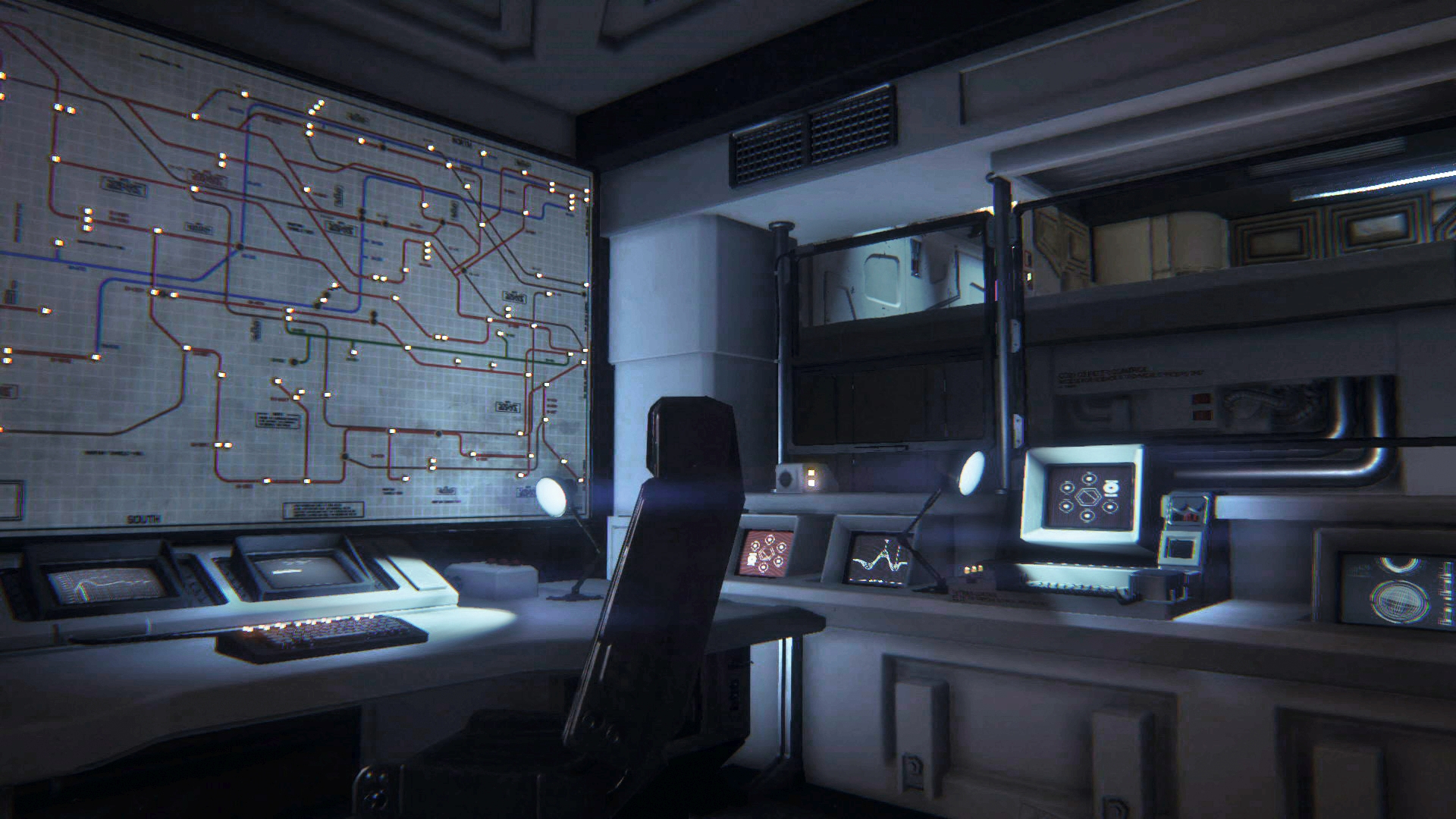Why I love the low-fi tech of Alien: Isolation
The Creative Assembly looked to the past to build a believable future.


In Why I Love, PC Gamer writers pick an aspect of PC gaming that they love and write about why it's brilliant. This week Andy admires the big beautiful buttons of Alien: Isolation.
A lot of 1970s science fiction has aged badly, but Alien hasn’t. This is down to several factors, including director Ridley Scott’s insistence on realism over flashy effects, and the practical, industrial designs of concept artist Ron Cobb. In the Alien universe, space travel is not glamorous or exciting; it’s completely matter-of-fact. The crew of the Nostromo aren’t in awe of the fact that they’re travelling between the stars. They just want to get paid and get home. And this is reflected in the stark, functional design of the Nostromo, which is more like an oil rig or a submarine than the fantastical ships we’re used to seeing in sci-fi cinema.
In Alien: Isolation, The Creative Assembly used Scott’s 1979 film as the basis for the game’s bold art design. Fox gave the developers access to a colossal 3TB archive of production material, including unreleased photos of the sets, and from this they created their own world using the same utilitarian design philosophy. The result is a setting that doesn’t just look like Alien, but feels like an authentic part of its universe. Sevastopol, like the Nostromo, is the product of a society where all the wonder and adventure of space travel has been replaced by business. I’ve always loved that about the Alien series. Much sci-fi is optimistic, dreaming of a brighter future, but in this universe, space is just another way to turn a profit.

It’s remarkable that, even with the presence of chunky IBM-style keyboards, flickering CRT monitors, and reel-to-reel tape players, Isolation’s setting doesn’t feel like an archaic throwback to the 1970s. You completely buy into its retrofuturistic design, a result of how artfully understated everything is. You get the sense that this technology is a natural part of the setting, rather than something included to evoke a particular time period or aesthetic. It’s an attention to detail and a dedication to believable worldbuilding that sets both Alien and Alien: Isolation apart in their respective genres.
In an interview in Paul Scanlon’s Book of Alien, Ron Cobb says: “I resent films that are so shallow they rely entirely on their visual effects. I’ve always felt that a lot of effort should be made to render each environment as convincingly as possible, but always in the background.” And that’s what Isolation, and the film, do so well. They invite you to credible sci-fi worlds that don’t rely on far-fetched technology and fancy special effects to convince you that you’re in the future. You believe you are because it seems real. The more grounded a setting is, even if it’s fantasy or science fiction, the easier it is to relate to it. That’s why something like prequel Prometheus, with its showy holographic computer interfaces, isn’t as convincing as Alien, despite major advances in effects technology.

Alien: Isolation also takes deeper inspiration from the film’s design. The cold claustrophobia of the Nostromo is a big part of Alien’s power as as horror film, but the lo-fitechnology plays a part here too. In a lot of sci-fi there’s some magical device or weapon that saves the day, but all the crew of the Nostromo have to fight the alien is a cattle prod, a primitive motion tracker, and some rusty old flamethrowers. This establishes that, even in this advanced spacefaring future, technology won’t save you; you have to rely on your wits. And the game echoes this brilliantly. The crude technology actually adds to the horror, because you never feel like there’s a miraculous technological solution to your problems.
Alien: Isolation is proof that, when it comes to science fiction, less can be more. Videogame sci-fi is often shiny and ostentatious, as artists strive to show you just how incredibly futuristic they can make their worlds look. But Sevastopol is more convincing than any of them, because it keeps it in the background. Granted, the artists at The Creative Assembly had some incredible source material to work with. But rather than just recreate the film’s sets, they used that enormous archive of reference material as a starting point to craft their own distinctive extension of the film. Alien: Isolation is a passionate, faithful homage to the film, but it’s also a worthy addition to the universe and mythology in its own right.
Keep up to date with the most important stories and the best deals, as picked by the PC Gamer team.
If it’s set in space, Andy will probably write about it. He loves sci-fi, adventure games, taking screenshots, Twin Peaks, weird sims, Alien: Isolation, and anything with a good story.


